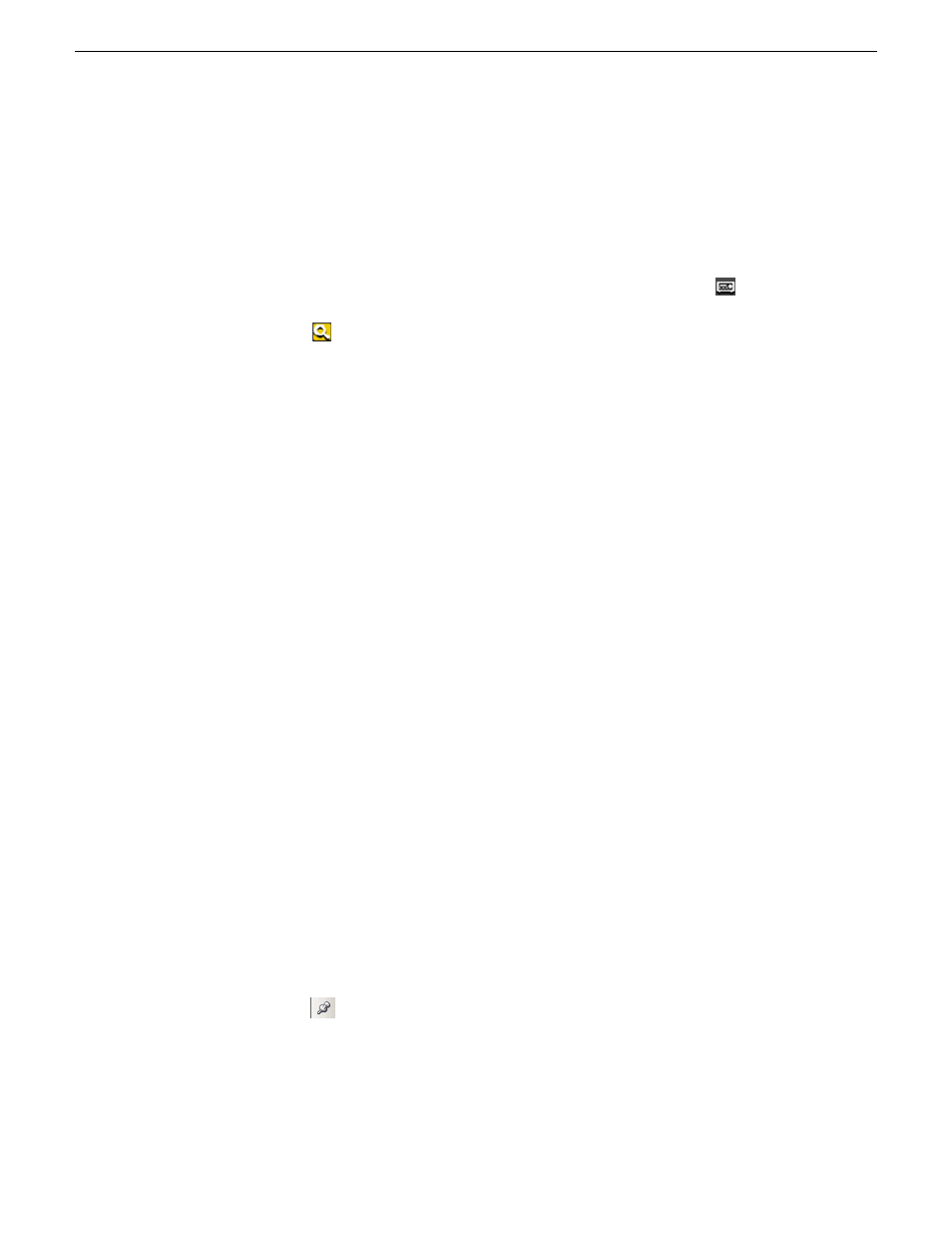Adding auto-mark keywords, Deleting keywords, Adding keyframes – Grass Valley Aurora Edit LD v.7.0 User Manual
Page 70

The keyword is added to the list.
Adding auto-mark keywords
You can define how newly created keywords or keyframes are named using the
Keyword Options dialog box.
1. Select the Source Tool by pressing
2
on the keyboard or clicking the
Source
Tool
button.
2. Click the
View Metadata
button.
The metadata tabs open in the dynamic tool area.
3. Click the
Keyword Options
icon, next to the Mark In and Mark Out fields.
The Keyword Options dialog box displays.
4. To automatically generate keyword names, check the Auto-Generate keyword
names box and fill in the text field.
Once the option is checked, keywords are created using the defined naming rule.
(Optionally, you can use "%" to specify where the numbering will be placed.)
If the option is not checked, the default keyword name, keyword , is used with
an incremental suffix.
5. Click
OK
.
Deleting keywords
You can delete keywords you no longer wish to use.
Deleting the material between the Mark In and Mark Out points does not delete the
keyword. Instead, it moves the keyword's Mark points to the asset's original timecodes.
Adding keyframes
A keyframe is a zero-length keyword.
Rather than being created from the currently selected mark-in and mark-out points, a
keyframe is created at the clip player’s current play position. Selecting a keyframe
moves the clip player’s current position to that location, but it doesn’t modify the
mark-in or mark-out points.
•
Use one of these methods to create a keyframe:
•
Press the
Insert
key on the keyboard.
•
On the Keywords tab, click on the arrow next to the Add Keyword button and
select
Add Keyframe
.
The keyframe displays as a notch, similar to a storyboard marker.
70
Aurora Edit LD User Guide
08 April 2010
Using MediaFrame to manage media